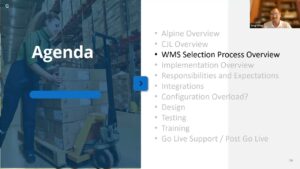Did you know? WES is changing the game for fulfillment centers. As more warehouses add automation, using technologies like automated storage and retrieval systems (AS/RS), robotics, and conveyor and sortation systems along with manually focused processes, the need for a relatively new type of software to coordinate all these resources has arisen: the warehouse execution system (WES).
WES is catching on because it can coordinate resources around incoming orders with full knowledge of the availability of automation resources. And, perhaps the best sign of the demand for WES is that more warehouse management system (WMS) vendors are building up WES offerings of their own.
WES sits between traditional WMS and the warehouse control system (WCS) layer that runs automated materials handling equipment on the warehouse floor. The overall role of WES is “orchestrating” the release of work to resources and doing it in a way that hits shipment times while level loading across subsystems to avoid bottlenecks. As the article states, “WES is constantly getting data flowing up from controls, coming in from the subsystems it interfaces to, as well as information coming down from WMS. We use that data and information to create a balance across the building and a continuous flow of product. The goal is to always have work in front of resources and operators, but never overrun an area with too much work.”
See how WES is changing the game for fulfillment centers and see what experts like Alpine’s managing principal, Michael Wohlwend, have to say about using WES as more than a visibility layer in this new article from Modern Materials Handling.













